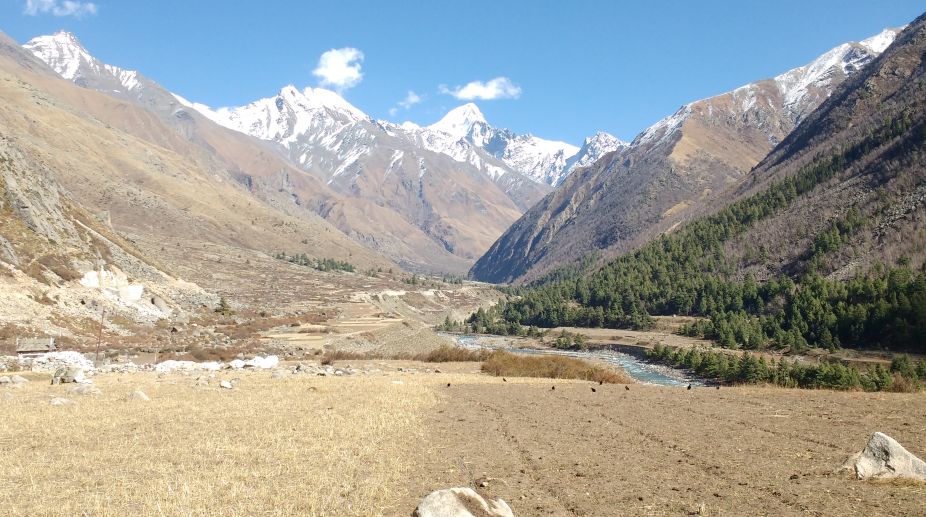Picking up roads less taken for an adventurous trip is a smart decision for any travel enthusiast willing to take up risk and discover unexplored destinations. One such destination less travelled lies in the queen of hills – Himachal Pradesh. Chitkul is the place. You might have been to many beautiful and fun-filled destinations in the majestic Himachal Pradesh, but without a visit to Chitkul village that exists peacefully on the Indo-China border, your trip to Himachal is definitely incomplete.
Aptly called the ‘last village of India’, Chitkul exists in the Kinnaur district of Himachal Pradesh and is home to around 600 habitants. In fact, this is the only destination where one can travel to without a permit unlike other places with international boundaries. Anyone planning to go beyond the village requires prior permission due to stringent border security regulations.
Words cannot define the beauty of Chitkul. The Indo-Tibet trade route is definitely an attraction for avid explorers. Also, the crystal clear Baspa river flowing by the village is really breathtaking. One can also camp at the river bank of Baspa. The immense natural beauty, the magnificent surrounding of snow-peaked Himalayan mountains, meadows, small wooden cottages, houses with slate or wooden plank roof, a Buddhist monastery and a small bus stand give a picturesque sight of Chitkul. Not to miss the hindustan ka akhri dhaba (India's last food joint) located in the akhri village (last village), Chitkul. The village gives different shades of beauty with each changing seasons.
When to travel:
The place is usually cold and windy during the summer or mid-winter time and spine-chilling cold during the winters. To catch up with the awestruck panoramic views it is better to plan your trip between April to October.
The roads to Chitkul are usually closed between November to March as the snowfall makes the road difficult to drive on. Travelling to Chitkul is no less than a daredevil act as one has to pass through one of the world’s dangerous roads of Kinnaur district, which are dreadfully steep, narrow and bumpy.
While going to Chitkul you can also enjoy some of the captivating views of Reckong Peo, Sangla valley, Charang Pass, Kalpa and Kinnaur Kailash mountains, forested slopes of tall green pine trees.
Distance and routes:
Chitkul is almost 600 km from New Delhi. No direct bus connectivity is there to this destination, so one has to switch from Reckong Peo to Kalpa and from Kalpa to Chitkul. Anyone travelling in a cab will take the same 13 hours tiring journey without any halt. Best is to take halt at Sangla valley and Kalpa and then move to Chitkul so that you don’t miss out an inch of beauty and joy of Kinnaur district in Himachal.
Important tips:
There are some important things that you should bear in mind while planning your trip to Chitkul. This is undoubtedly a ‘Must Visit’ place for everyone, however the village prefers nature loving and peace seeking people. One who has time for himself/herself and for the nature. You won’t get mobile network on your arrival but the long gone PCO booth still ticking. No ATM booths. So carry cash. If you are interested in going to the Indo-Tibet border, there are some local people who can assist you on getting the permit.











